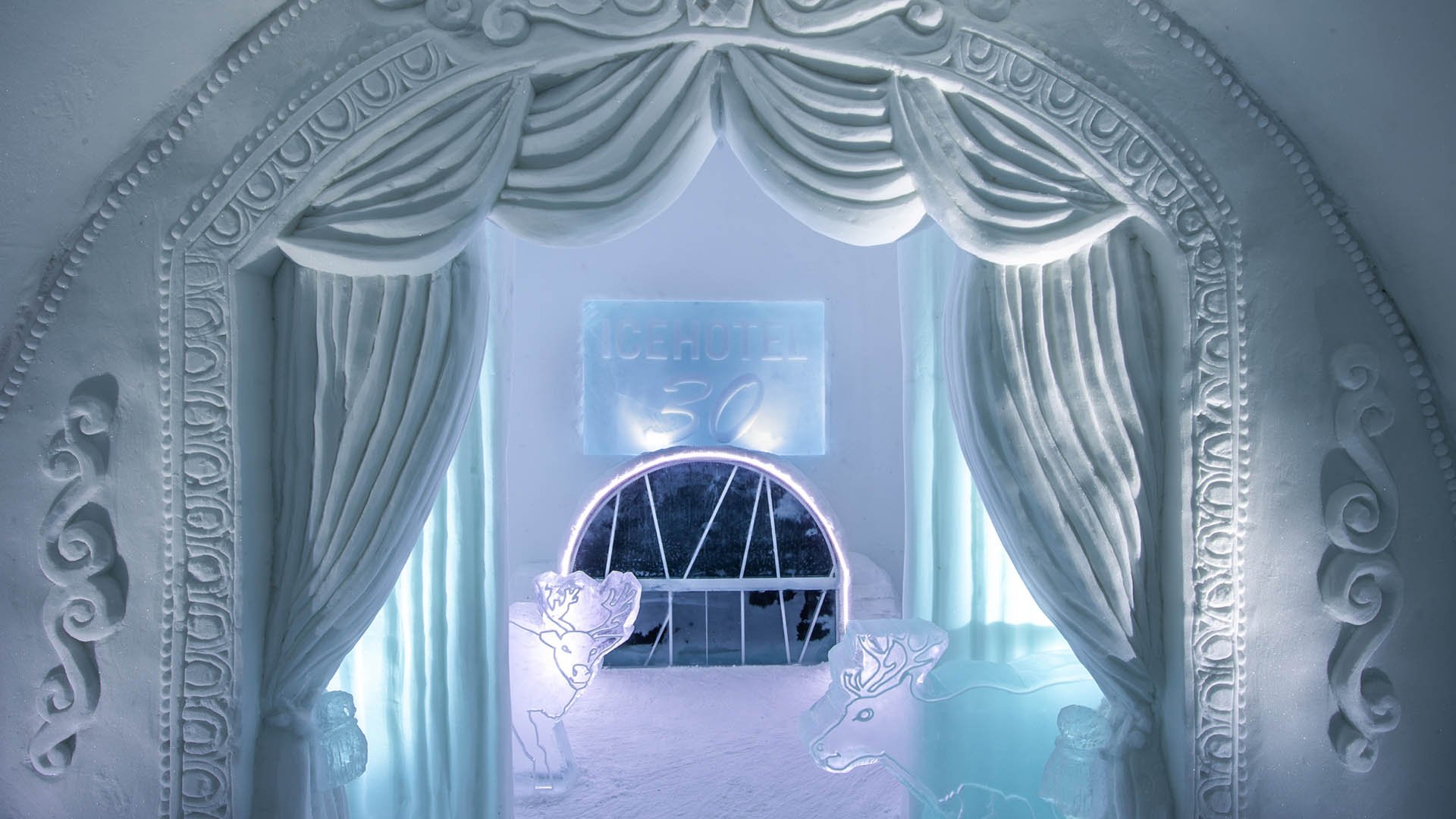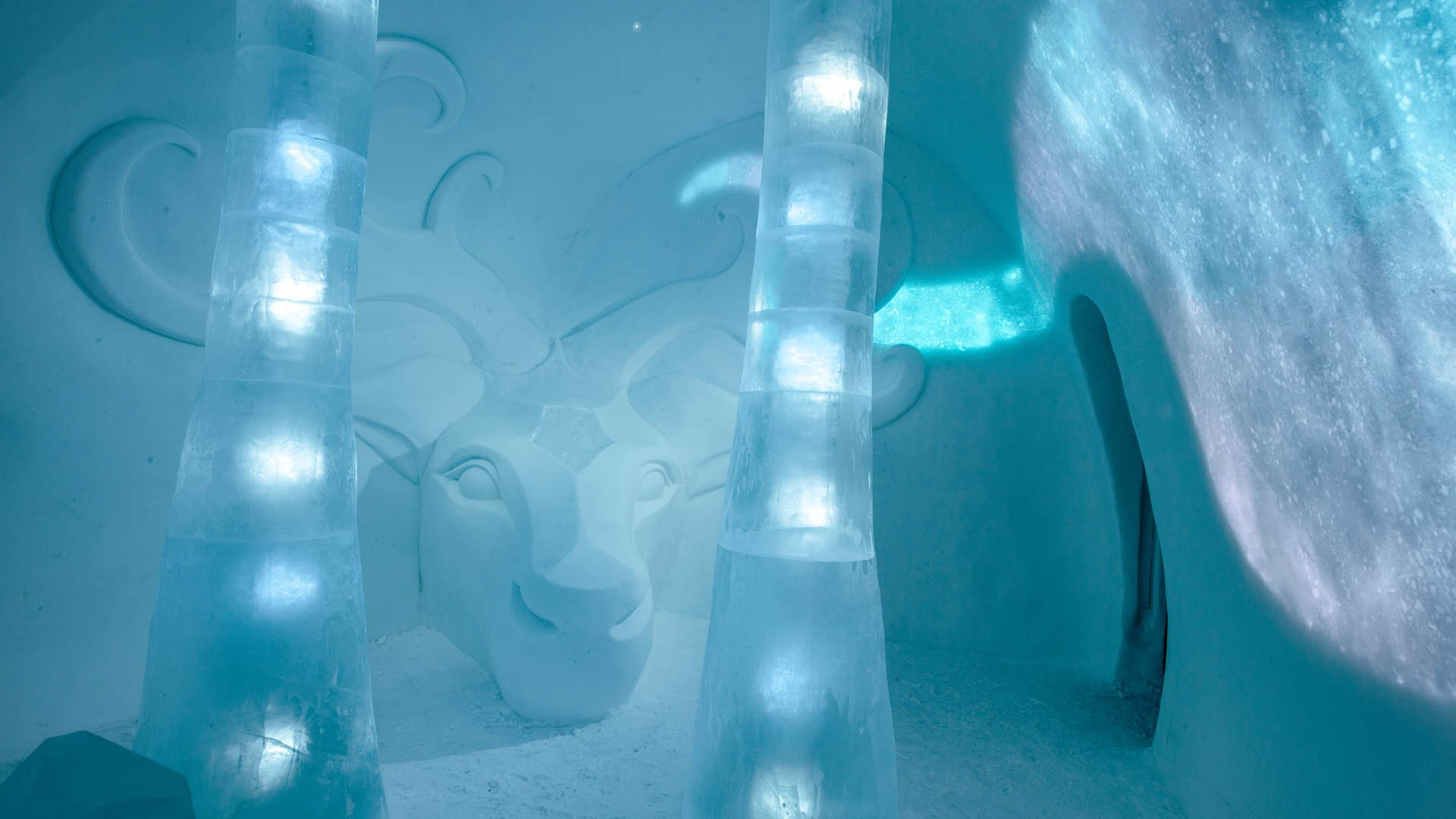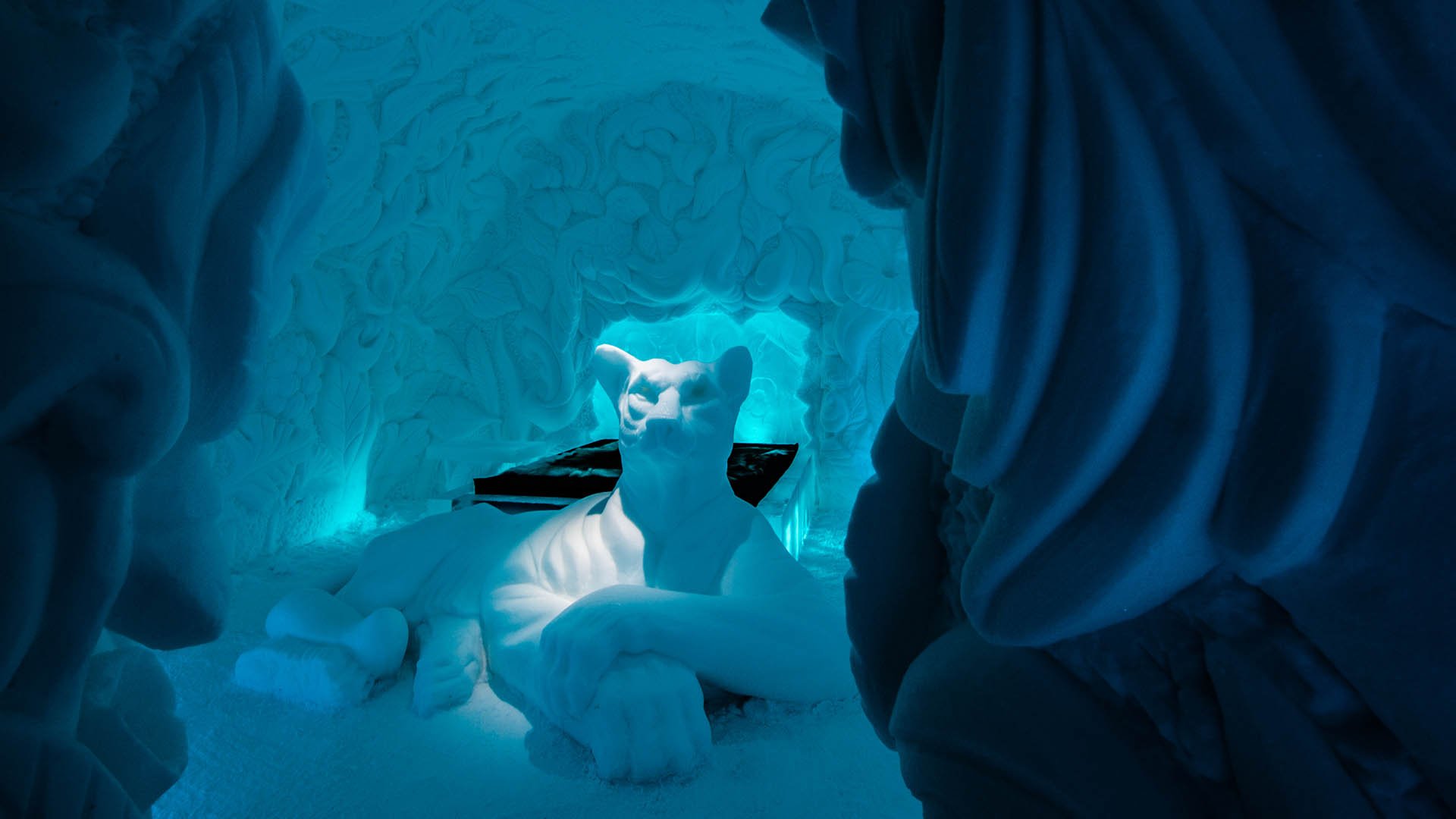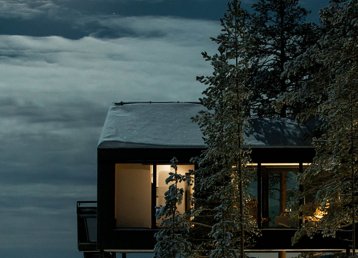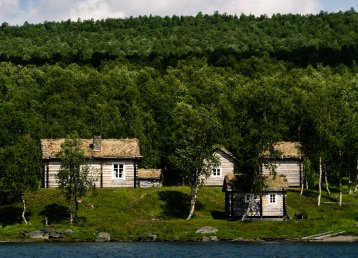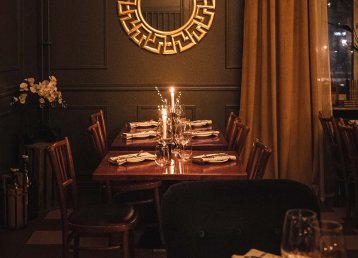The entrepreneur Yngve Bergqvist used to run the inn in the village of Jukkasjärvi, about 17 kilometres east of Kiruna. They had a sauna where they rented out towels and sold beers to the mining company directors flying in for conferences. This was in the late 1980s, and Yngve figured it had to be possible to make more of it. These days, ICEHOTEL is an icon among travel destinations around the world. A steady stream of curious explorers find their way to Jukkasjärvi every year, and now they can sleep on ice all year round.
“Dig where you stand”, was – and is – the motto of business visionary and entrepreneur Yngve Bergqvist.
Ice, plenty of ice
Initially, the long and cold winters made Bergqvist look around for new ideas to use what was at hand in Jukkasjärvi – ice, and plenty of it. Bergqvist was inspired by the Japanese ice sculpturing tradition, and with the help of two professional ice sculptors from Japan as instructors, he invited artists to attend a workshop in Jukkasjärvi in 1989. This marked the start of a long journey with the ice from the Torne River.
Inspired by the workshop, the following winter saw the first-ever ice structure – an especially designed igloo built using mould technique was constructed on the frozen Torne River. The 60 m² igloo was intended as an art gallery and was named ARTic Hall. The following winters, ARTic Hall attracted considerable attention. It was used not only to display art but also for church services and film showcases. Bergqvist and his associates also opened a bar inside the hall and even tried sleeping in subzero temperatures. The igloo had grown to measure 250 m² in size, and the building technique was refined and patented in Sweden and Norway.
The making of an art suite
Tjåsa Gusfors and Ulrika Tallving are two artists and they sure have a thing for ice and snow. That’s why they so often find themselves at Icehotel in Swedish Lapland.
And there was ICEHOTEL
The first party of overnight guests to stay at ICEHOTEL was a specialist survival group of the Swedish Armed Forces. International space satellite company Versatel was the first conference group to sleep in -5° C (23° F) on a bed of soft reindeer skins. The next morning, they woke up thrilled and exhilarated by the experience and ICEHOTEL was born. Nowadays, some 30 000 guests have the very same experience every winter when they stay in the original ICEHOTEL.
Also read
A design favouriteThe ice church
The ice church at ICEHOTEL is literally one of the coolest wedding venues in the world. Like ICEHOTEL itself, the ice church only exists for a few months. Every winter, selected artists create a new ice ceremony hall. In addition to that, another 35 Art Suites are created for wedding couples and guests who would like to spend a night on the ice.
Once the church, and the suites, has melted away in spring, all that is left are the memories that you share. You can scarcely find a more unique location for your wedding.
Get married at ICEHOTEL
Each year, about 80 couples get married at ICEHOTEL. Like to be one of them? Have a look at weddings at ICEHOTEL.

Getting to Icehotel
ICEHOTEL is in the village of Jukkasjärvi, about 17 kilometres east of Kiruna. You can fly to Kiruna from Stockholm Arlanda (SAS or Norwegian) or take the overnight train from Stockholm (SJ). There are buses from Kiruna city to Jukkasjärvi, and you can also book a transfer at your hotel. To learn more, go to icehotel.com.
A night in -5 °C – how does it work?
Most people who stay in the hotel enjoy it. The snow has an insulating effect that makes it silent and tranquil, and when you switch off the lights at the headboard, the room turns dark in a way that only people living in very remote areas experience these days.
But isn’t it freezing cold?
The trick is to keep the core temperature of your body warm, but slightly lower than normal – that goes for good sleep anywhere, not just at ICEHOTEL. The beds might be made of ice, but there’s a regular mattress, covered with an insulating reindeer skin so it’s not as cold as one might think. The staff supplies you with an expedition sleeping bag made for temperatures as low as -25° C (-13° F), but the temperature inside the hotel never drops below -5 °C (23° F), so they are more than sufficient to keep you warm. Oh, and here’s a tip; sleep in your thermal underwear, thin wool socks and a comfy cap.
Sleeping in the cold
Even though the outside temperature in Jukkasjärvi can drop well below – 30 degrees Celsius, the inside temperature never goes below – 5 degrees, making you sleep like a baby, surrounded by ice and snow, inside your comfy sleeping bag.
ICEHOTEL all year round
The world-famous ICEHOTEL outside Kiruna was initially just a crazy idea for the winter. These days it’s just as crazy – but all year round. The sun, which would normally break down and melt all art back to nature, does instead maintain it through summer with the help of solar cells.
ICEHOTEL 365 is a year-round ice experience with 20 Art Suites, an Icebar and an Ice gallery – all created out of snow and crystal clear ice from Torne River. It’s a kind of landmark for those wanting a new hotel experience to tell about. Sleeping in a designer hotel suite made of ice while the midnight sun illuminates the landscape.
The ICEHOTEL 365 has a temperature of minus five degrees Celcius all year. In the summer it is cooled with help from the sun, as the 600 square meters of solar panels harvest the almost constant daylight over the summer months, above the Arctic Circle.
The Torne River
When other hotels talked about the importance of recycling, ICEHOTEL always took it a step further by recycling the entire hotel. When spring arrived in Swedish Lapland, ICEHOTEL melted and poured itself back into the Torne River, the origin of the ice used to build the hotel.
Every winter ICEHOTEL borrows several hundred tonnes of ice from the Torne River, only to give it back when spring arrives. And it is a bit of hassle, dragging up about 5,000 tonnes of natural ice. One might even wonder why decent tap water wouldn’t do? But here, in the ice, lies the beauty of ICEHOTEL.
At this exact spot in the river, the water flows at a perfect pace. Not too fast, so the rapids stir up the sediments on the river floor, enough to keep the oxygen levels rich (compared to oxygen-low tap water which turns milky white when frozen), yet slow enough, giving the ice time to thicken. The result is pure, crystal clear ice. And thanks to the rivers pristine source 200 km north of the Arctic Circle, it also free of pollutants and makes excellent drinking water.
Actually, there’s a funny story about that.
– We were about to attend an event in the US where we were supposed to sculpt from blocks of Torne River ice. But the ice got stopped in customs. They did loads of test making sure that the ice didn’t contain any toxins and whatnot, says Arne Bergh, previous Creative Director at ICEHOTEL. The tests came back with the quote: Cleaner than water.
And while you’re visiting in summer, do go down to the river bank and have a look. Within two minutes, an ICEHOTEL has passed before your eyes in the shape of a free-flowing river.
Ice harvesting
The ice is harvested from mid-March to mid-April. At that time, the ice is about 80 centimetres thick. Tractors and custom-made tools are used, to be able to saw and lift, the about two tonnes, heavy ice blocks from the river. The ice blocks are then stored in -5°C until the coming winter to be used in next season’s version of the ICEHOTEL.
Visit the original ICEHOTEL
Make a reservation
Seasons, avalibility and all that jazz can of course be found on icehotel.com





























